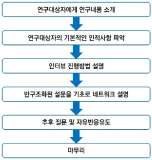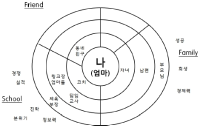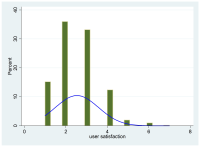
Purpose The purpose of this study is to measure the daily physical activity of male and female middle school students according to the period (VD: vaction day, SNPE: school day no PE, SPE: school day with PE) by using 3-axis accelerometer, and to compare the characteristics of adolescent physical activity according to gender and period. Methods The subjects were 130 middle school students (68 male, 62 female students). Data collection was performed using a 3-axis accelerometer(GT3X model, ActiGraph). Collected data were converted into time by intensity and rate using physical activity analysis program (Actilife v6.11.9) and analyzed by statistical program (SPSS 25.0). One-way ANOVA and independent sample t-test were used for statistical analysis. Tukey's HSD was used as a post analysis. The statistical significance level was .05. Results As a result, during each periods(VD, SNPE, and SPE), except for MVPA(moderate to vigorous physical activity) time on SPE, sedentary and MVPA time were significantly higher in female students, and low intensity and total physical activity time were significantly higher in male students. For male students, total physical activity time was higher in the order of SPE, SNPE, and VD, and for female students, physical activity time during the semester(SNPE and SPE) was significantly higher than VD. For male students, MVPA time was significantly high in order of SPE, SNPE, and VD, and for female students, it was high in order of SPE, SNPE, and VD but only significant difference occurred between SPE and VD. For both male and female students, sedentary time was high in the order of VD, SNPE, and SPE, but the sedentary time during vacation was significantly higher than during the semester. Conclusions When summarizing the results, first, it was confirmed that school and physical education classes as a physical activity space play a significant role in physical activity, especially MVPA, of male and female middle school students, second, the physical activity effect of physical education class was found to be more effective in male students. Based on the results of this study, it is necessary to conduct studies on various grades and to explore various factors affecting physical activity in a complex way.



PURPOSE The purpose of this study was to investigate the risk factors for anterior cruciate ligament injury using the Landing Error Scoring System (LESS) and muscle activity during the drop vertical jump for overweight females. METHODS The body mass index was 18.5-22.9 kg/㎡ for normal weight females and 23-24.9 kg/㎡ for overweight females among 10 participants aged 20-30 years classified into groups of participants without any injury history and those who were right-footed. An automatic heigh-tweight machine, body composition analyzer, diagnostic imaging, electromyography with the LESS, and muscle activity analysis were used for measurements. The difference in muscle activity between the normal weight and overweight females was evaluated by independent t-test. RESULTS Overweight females had a smaller angle of knee bending during the drop vertical landing, leading to a smaller knee curve angle. In addition, they landed with an unbalanced foot touch on the ground inclined backward, thereby breaking the whole body balance. Overweight females had an incorrect posture compared with normal weight females, with higher LESS points. The muscle activity of the rectus femoris was higher than that of the biceps femoris, indicating a higher load on the muscle. CONCLUSIONS Overweight females take more load on the knee joint and cannot absorb the impact force properly. These results suggest a higher risk of anterior cruciate ligament injury in overweight females.
The purpose of this study is to investigate the further direction of molecular biological studies, the advantages and limitations of assaying samples, and variables in figuring out the details of domestic and overseas studies verified through cell and molecular biological analysis in order to analyze the effect of concurrent training. The analysis study was limited to domestic and overseas literature, which investigated the effect of combined training using molecular biological analysis among studies to date. The study was reclassified by specialty, composed of professors of physical education and doctors of exercise physiology. The final selected study analyzed the subject and the trend of studies in terms of comprehensive perspectives. In detail, it analyzed hormonal and enzymatic changes in criteria such as leptin, 5-HT, ACTH(adrenocorticotropic hormone), cortisol, testosterone, GH(growth hormone), LDH(lactate dehydrogenase), CPK(creatine phosphokinase), antioxidants in blood samples and protein, and enzymatic and morphologic changes in for CRP, VEGF(vascular endothelial growth factor), PAI-1(plasminogen activator inhibitor-1), MAD(malondialdehyde), carnosin, and SDH(succinate dehydrogenase), the area of muscle fibers, ratio of type Ⅰ/Ⅱ muscle fiber and capillary proportion per muscle fiber in the extracted muscle by biopsy, for example. Finally, urine samples, and hormonal changes (like cortisol), were analyzed. The results of the analysis of domestic and overseas studies according to combined training has shown that this training has more varied effects than single training and lower improvement by interference effect or magnifying the effect of one type of training amongst the combined training types appears, rather than higher improvement through combined trainings. Therefore, it should be investigated in view of performance improvements relating to the characteristic of sports.
PURPOSE This study aimed to establish a standardized evaluation of the consistency and reliability of the results of the 2018 Buenos Aires Youth Olympics. METHODS The results of the preliminary and the final rounds of the individual Boys and Girls competition of the 2018 Buenos Aires Youth Olympics were collected. Data were organized using Microsoft Windows Excel 2021. Windows SPSS 26.0 was used for descriptive statistics. Intraclass correlation coefficient calculation was used to analyze the evaluation score. The winner/loser decision, and the evaluation interrater agreement was confirmed using Fleiss' kappa. RESULTS There was a difference in the scores given by the judges in both the preliminary and final rounds of both competitions. A low correlation was observed between the decided winner of the judges, and the point variance for each item. CONCLUSIONS In the trivium value system, differences in the evaluation strategies of the judges may exist. Thus, improvements to standardize evaluation should be implemented. In addition, this scoring system considers various factors in the evaluation process, and the scoring system is complicated. Therefore, there may be a need to revise the evaluation system and find the optimal number of judges to create a better evaluation.
PURPOSE The purpose of this study was to understand the current market trend for golf apparel rental services and to present basic data to revitalize the golf apparel rental service market and prepare continuous growth plans. METHODS The following keywords were selected for data collection: "golf wear + rental (렌탈)," "golf wear + rental (대여)," "golf apparel + rental (렌탈)," and "golf apparel + rental (대여).“ The analysis period was limited to two years and seven months from January 1, 2020 to July 31, 2022, when COVID-19 began. The analysis was focused on the top 60 keywords to simplify the network. RESULTS Various keywords were extracted through text mining, TF-IDF, connection centrality, emotional analysis, and semantic network analysis of big data analysis. These were then categorized into four factors: “golf apparel rental service,” “self-expression and authentication,” “sharing economy,” and “emotion.” CONCLUSIONS The results of this study show that young golfers are unreluctant and are generally positive in renting golf apparel. Therefore, if the growing paradigm of the consumption behavior of MZ-generation golfers is recognized and analyzed and the requirements are continuously satisfied through various strategies, there will be a higher possibility to help expand the golf apparel rental market.

Purpose The purpose of this study was to investigate how the educational zeal of mothers with winter sports students in secondary schools appears on the network charts. Methods It lasted 28 days from February 6 to March 5, 2017. Starting with a description of the QNA, all interviews were recorded on a tape recorder to carry out the project. Data analysis were divided into four areas(Family, Friend, School, etc.) and 13 associative words(enthusiasm, intelligence, performance, entry, success, sacrifice, atmosphere, polarity, competition, vicarious, satisfaction, economic power, anxiety, stress) to attach associative word stickers according to color. Results As a result of inducing arbitrary interpretation of the network subject's educational network, it was possible to analyze the factors affecting mothers' sports education in three dimensions. In addition, although there is not much difference in areas around "I" on sports education charts, the distance between associative words and network charts has gradually moved away from the same person as their children go on to school. Conclusions The methodological significance of this study has been found to be very useful in visualizing an individual's educational network by utilizing qualitative network analysis and in understanding the characteristics associated with education.







Purpose The study aims to analyze the factors affecting the Residents user satisfaction in order to improve the management of the Open School Sports Center the support facility of the National Sports Promotion Fund. Methods This data is based on Korea Institute of Sports Science(KISS)'s Open School Sports Center Usage Status and Satisfaction Survey (2016) and Open School Sports Center use performance. The analysis model is a regression model (TOBIT) that takes into account the limited characteristics of dependent variables. Results The results are as follows: the satisfaction is negatively related age, number of regulations, weekday opening hours, and usage fees. Conclusion Therefore, in order to increase the satisfaction of Open School Sports Center residents users, various supports are needed. This includes funds for PR, discounts and user-friendliness. It also requires differentiated management of each Center. In the case of regions and facilities, consumer-oriented policies need to be applied instead of collective standards.


The purpose of the study was to provide managers and owners of fitness center with new marketing strategies for distinction strategies of quite competitive Korean fitness industry with analysis of mediating effects of consumption emotion within the relationship of fitness selection attribute and customer satisfaction. This paper chose fitness center customers as population of this study who registered in each 5 fitness centers in Seoul and Gyeonggi using convenience sampling. For this study, 400 questionnaires were given fitness center customer. For the analysis of data, 376 questionnaires were used using SPSS 15.0 Windows and Amos 7.0. To examine respondents demographics traits, frequency analysis was processed and reliability analysis, confirmatory factor analysis and correlation analysis for relationship among the variables were conducted. For the verification of model suitability and research hypotheses, the mediating effects were tested by using Bootrapping method and Aroian-test through structure equation modeling. The significance level was set at α=.05, and the results are as follows. First, Among fitness selection attribute variables, structural strategy, cost, a trainer and program had significant influence on customer satisfaction, but, atmosphere and facilities had not significant on customer satisfaction. Second, Among fitness selection attribute variables, structural strategy, cost, a trainer and atmosphere had significant influence on consumption emotion, but, facilities and program had not significant on consumption emotion. Third, consumption emotion had significant influence on customer satisfaction. Fourth, consumption emotion fully mediated in the relationship between fitness selection attribute and customer satisfaction.


PURPOSE This study examined levels of safety knowledge and practice among recreational sports participants, focusing particularly on impacts of gender, age, injury experience, and exercise-level profile. In sports environments, understanding these factors is essential for developing targeted strategies to promote safe behaviors. METHODS Survey data from 7725 participants engaged in regular recreational sports activities were analyzed. Latent Profile Analysis was employed to categorize participants based on their injury experience and exercise levels, resulting in two profiles: Group 1 (moderate or severe injury experience with intermediate exercise levels) and Group 2 (mild injury experience with beginner exercise levels). Three-way ANOVA was then used to evaluate relationships between these profiles and safety knowledge and practice levels. RESULTS Results revealed significant differences across sex, age, and profile groups. Compared with women, men demonstrated higher levels of safety knowledge and practice, which were likely influenced by greater exposure to high-intensity sports and risk-taking tendencies. Adolescents exhibited the highest levels of safety knowledge and practice linked to structured safety education, but these levels declined in early adulthood and then increased again in middle age due to growing health awareness and preventive motivations. Furthermore, participants in Group 1 consistently showed higher levels of safety knowledge and practice than those in Group 2, highlighting injury experience’s role in shaping safety behaviors. CONCLUSIONS These findings underscore the importance of developing gender-specific safety education programs, age-appropriate interventions, and training initiatives tailored to beginning participants. Future research should evaluate these strategies’ long-term impact on safety practices and injury prevention in diverse sports settings.

Purpose The purpose of this research was to investigate the influence of professional baseball teams' message appeal type (emotional vs. rational) and message delivery method (article with photo vs. article without photo) on consumers' acceptance of the message. The hypotheses were two folds. First, compared with a rational apology article, a professional team's emotional apology article affected consumers' acceptance more positively. Second, a professional team's apology article with a photo attached influenced consumers' acceptance more positively than one without a photo. Methods To achieve the purpose of this study, the authors utilized a 2 (Message Appeal Type: emotional vs. rational) × 2 (Message Delivery Method: article with photo vs. article without photo) factorial experiment. An existing baseball team was selected and was assumed to have been involved in a game fixing situation. Out of 340 participants, 325 were used in the final analysis. Two-way ANCOVA of SPSS 23.0 was conducted to analyze the data. Results Findings revealed when a professional baseball team issued an emotional apology article, consumers were more positive about it than a rational one. Also when a professional team delivered an article with a photo, consumers accepted the article more positively than the one without a photo.

